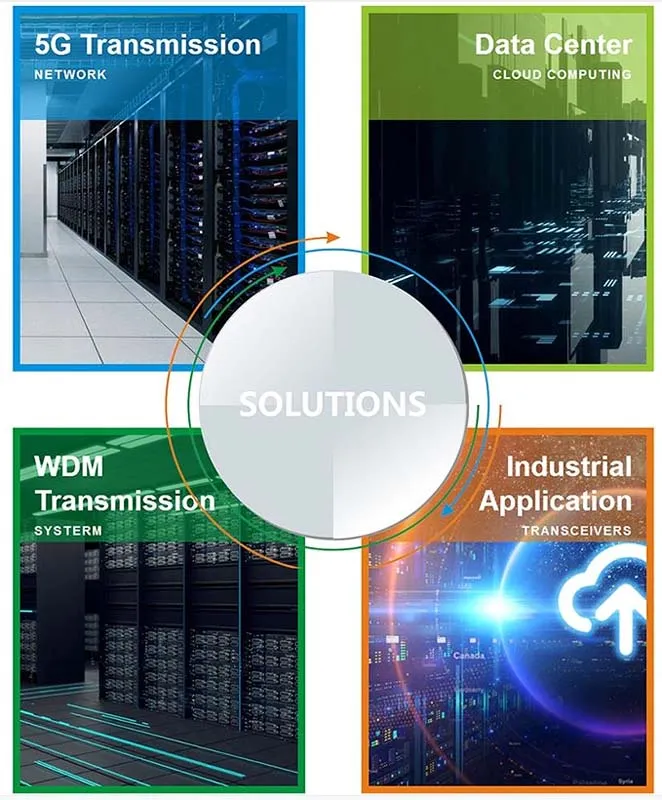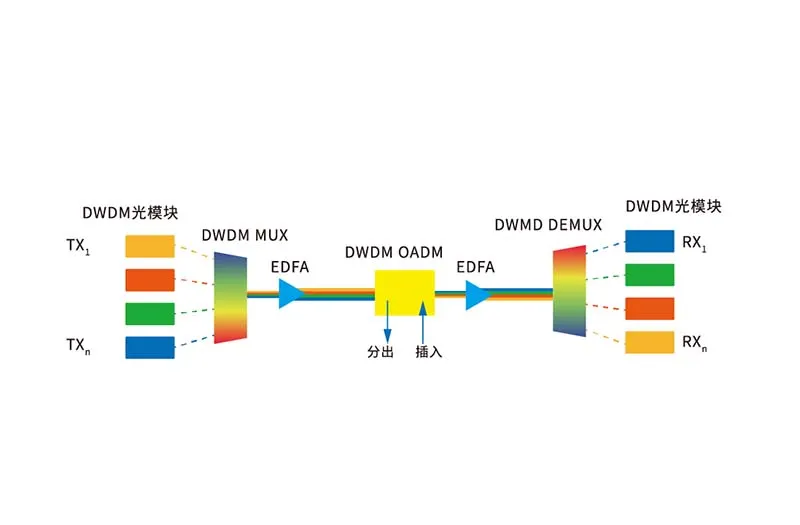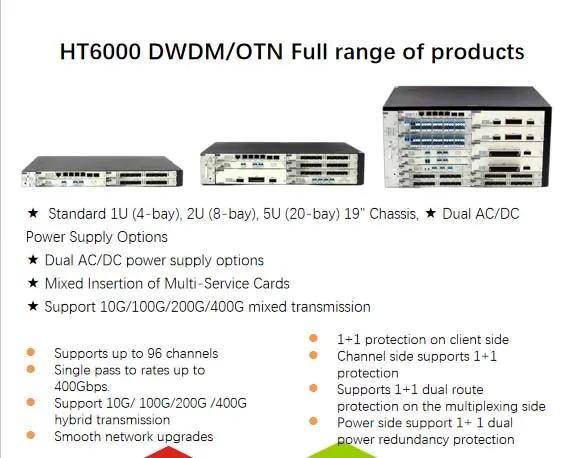In the era of rapidly advancing information highways, the explosive growth of data traffic continues to drive the evolution of optical communication technologies. From metropolitan access layers to global backbone networks, Wavelength Division Multiplexing (WDM) technologies have become the cornerstone of modern communication infrastructures. Among them, CWDM (Coarse Wavelength Division Multiplexing) and DWDM (Dense Wavelength Division Multiplexing) stand out with their unique advantages and complementary roles across diverse application scenarios.
This article provides a systematic analysis of CWDM and DWDM, exploring their technical characteristics, application benefits, and development trends. It also offers insights into selecting the appropriate solution based on specific network requirements.

I. CWDM Technology Explained: Synonymous with Low Cost and Flexibility
CWDM (Coarse Wavelength Division Multiplexing) employs a 20nm wavelength spacing to enable multiple parallel signal transmissions. Operating primarily between 1270nm and 1610nm, CWDM typically uses uncooled lasers, offering several key advantages:
Low Cost: Affordable components significantly reduce overall system deployment costs.
Low Power Consumption: Uncooled lasers consume considerably less energy than DWDM systems.
Ease of Deployment: No complex temperature control systems are required, enabling rapid deployment.
Short Distance Suitability: Supports transmission distances up to 160km at data rates below 10Gbps.
Typical Applications:
Metropolitan area network (MAN) access layers
Data center interconnections over short distances
Enterprise campus networks
5G fronthaul deployments
Thanks to its cost efficiency and flexible implementation, CWDM is the preferred choice for budget-sensitive and straightforward network environments.
II. DWDM Technology Explained: The King of High Capacity and Long-Distance Transmission
DWDM (Dense Wavelength Division Multiplexing) operates with wavelength spacing between 0.4nm and 1.6nm (equivalent to 50GHz to 200GHz grid spacing), primarily in the C band (1530nm-1565nm) and L band (1565nm-1625nm). DWDM delivers the following technological advantages:
Ultra-High Channel Density: Supports 80 to 160 wavelength channels, massively increasing transmission capacity.
Cooled Lasers: Provide excellent wavelength stability and consistent performance.
Long-Distance Transmission: Single-hop distances can reach several hundred to thousands of kilometers.
High Data Rate Support: Accommodates speeds up to 100Gbps and beyond.
Typical Applications:
Long-haul backbone networks
Metropolitan network cores
Regional backbone networks
Hyperscale data center interconnects
Submarine cable systems
The emergence and evolution of DWDM have significantly overcome traditional bandwidth and distance limitations in optical fiber systems, becoming a critical enabler of modern high-speed communications.
III. Core Comparative Analysis: CWDM vs. DWDM
1. Cost
CWDM: Low hardware and maintenance costs, ideal for cost-sensitive projects.
DWDM: Higher initial investment but more favorable long-term cost per unit of bandwidth.
2. Performance
CWDM: Excels in low data rate, short-distance applications.
DWDM: Supports ultra-high data rates and complex long-distance networking.
3. Scalability
CWDM: Limited by wider wavelength spacing, restricting channel count.
DWDM: Highly scalable to meet future high-capacity requirements.
4. Power Consumption
CWDM: Low power consumption, promoting energy efficiency.
DWDM: Higher power usage due to cooled lasers, but offers superior performance.
IV. Development Trends and Emerging Technologies: Complementarity and Innovation
As global network traffic continues to surge, CWDM and DWDM are evolving with increasingly overlapping application boundaries. CWDM remains focused on cost optimization and rapid deployment for edge computing, 5G fronthaul, and similar scenarios. Meanwhile, DWDM is advancing towards higher channel densities and ultra-long distances, supporting cloud computing, big data, and AI-driven massive bandwidth demands.
Emerging Technologies:
MWDM (Medium Wavelength Division Multiplexing): Optimized for 5G fronthaul, balancing cost and capacity.
LWDM (Light Wavelength Division Multiplexing): Innovative solutions for short-distance, high-speed data center interconnects.
In the future, CWDM and DWDM will coexist and converge, supporting diverse requirements while propelling optical communication systems toward greater performance and energy efficiency.
V. Application Scenarios and Solution Selection
For real-world network planning, enterprises and service providers should consider the following factors:
| Decision Factor | Preferred Technology | Notes |
| Cost Sensitivity | CWDM | Low initial investment, ideal for budget-limited projects |
| High Performance/Capacity | DWDM | Supports high bandwidth, high-speed, long-distance transmission |
| Future Scalability | DWDM | Accommodates channel density expansion to meet growing bandwidth needs |
| Rapid Deployment | CWDM | Short deployment cycle, quick rollout |
In complex networking environments like data center interconnects and 5G backhaul/fronthaul, hybrid architectures combining MWDM and LWDM offer enhanced flexibility and cost efficiency.
CWDM and DWDM are not competing technologies but rather the dual engines driving the advancement of optical networking. Balancing cost, energy management, and performance requirements, judicious selection and deployment of these technologies are key to building next-generation high-speed networks.
In this rapidly evolving market, selecting a partner with deep expertise and comprehensive product offerings is critical. HTF, as a professional provider of fiber optic products and WDM system solutions, boasts over a decade of experience in optical communication product development and manufacturing.
HTF is dedicated to helping clients build, connect, and optimize their fiber infrastructure, offering advanced transmission solutions for data centers, 5G networks, cloud computing, metropolitan networks, and access networks worldwide.
Of particular note, the HTF HT6000 series is a compact, high-capacity, and cost-effective OTN optical transmission system. Designed with a CWDM/DWDM universal platform, it supports transparent multi-service transmission, flexible networking, and access capabilities.
The HT6000 is ideally suited for national backbones, provincial backbones, metropolitan backbones, and other core networks, meeting the demands of nodes exceeding 1.6T in capacity. It stands as the industry’s most cost-effective transmission platform, offering IDC and ISP operators a reliable solution for expanding high-capacity WDM transmission.
Choose HTF—your gateway to the intelligent fiber network of the future.




